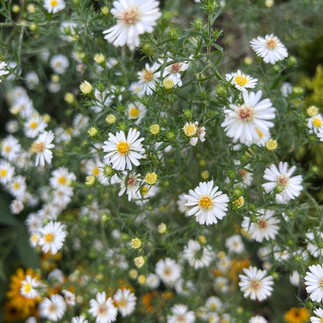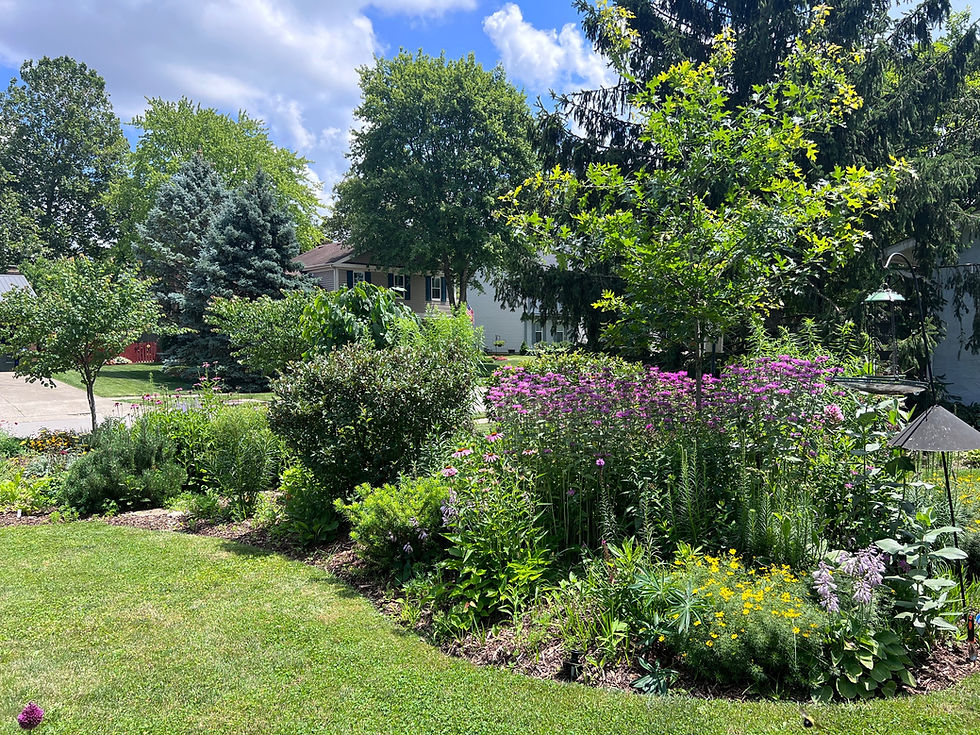Native Plants 101
- Cathy Tiffany

- Jan 14, 2024
- 3 min read
If you've begun to look into starting a pollinator/butterfly garden, adding some bushes, trees or flowers into your yard or specifically wanted to create a nature habitat in your yard, then you've probably read the term "native plant". What exactly does that mean?
A native plant is a plant that is a part of the balance of nature that has developed over hundreds or thousands of years in a particular region or ecosystem. Basically, it's the OG of the area! Before I get into why natives are so great, allow me to explain a few other types of plants that are the opposite of native that you'll run across in your plant shopping:
Non-native (sometimes called exotic): Non-native plants are species that have not existed historically in one area but have been introduced due to human activities. Non-native plants don’t necessarily pose a threat to native plants, but may not support ecosystem health as well as native plants do. Basically, a plant can be native to the continent but non-native to a particular area (my interpretation of my research).
Exotic... an exotic plant is a species that is not native to a particular region or ecosystem, often coming from a different continent. Exotic isn't necessarily bad, but often doesn't feed the local wildlife (i.e.: pollinators) like a native plant does.
Invasive...think Amur honeysuckle, Kudzu, Bradford Pear trees, etc. Invasive plants aren't native and their introduction causes or is likely to cause economic or environmental harm or harm to human health. They usually do their damage by outcompeting native plants.
When considering planting a native garden, pollinator garden or backyard habitat, the more natives you plant the easier your life will be. Non-natives aren't bad, exotic (in my opinion) should be used moderately and invasives avoided completely. You'd be amazed at how many invasive plants have permeated the suburbs and we've had a couple: the Bradford/Callery Pear tree (now banned for sale in Ohio) and the Japanese Barberry. We got rid of both. Barberry bushes are everywhere, do nothing for local wildlife, mess up the soil and have been implicated in the spread of Lyme disease!
While I'm a huge fan of native plants, we have some non-natives planted, like the Grape leaf anemone. I think it's pretty. No pollinators use it, but we probably have over 90% native plants, so I'm not worried about a few non-natives. If you have a plant that makes you smile, by all means plant it (as long as it's not invasive). If a modern tea rose reminds you of your grandma, then plant it. But, it would be amazing if you could also plant a native...let's call it the 50/50 rule! This leads me to an important point, almost the most important one:
Did you know that many modern cultivars (varieties) of many flowers are sterile? That means they don't produce any pollen or nectar! This is vital information to have if your goal is to create a pollinator/butterfly garden. Native plants are loaded with pollen and nectar, which is the stuff bees, butterflies, moths and other pollinators need. The best way to ensure you're getting a flower that feeds local pollinators, visit your local nursery and ask for help.

The last few reasons native plants are a great choice:
They're already hardwired to understand the growing requirements for the area where they grow, so that makes your job way easier! They need less fertilizers, pesticides and watering. This saves YOU time and money!
They provide food and shelter to local wildlife, support pollinators and promote biodiversity.




























Comments